[javascript protected email address]
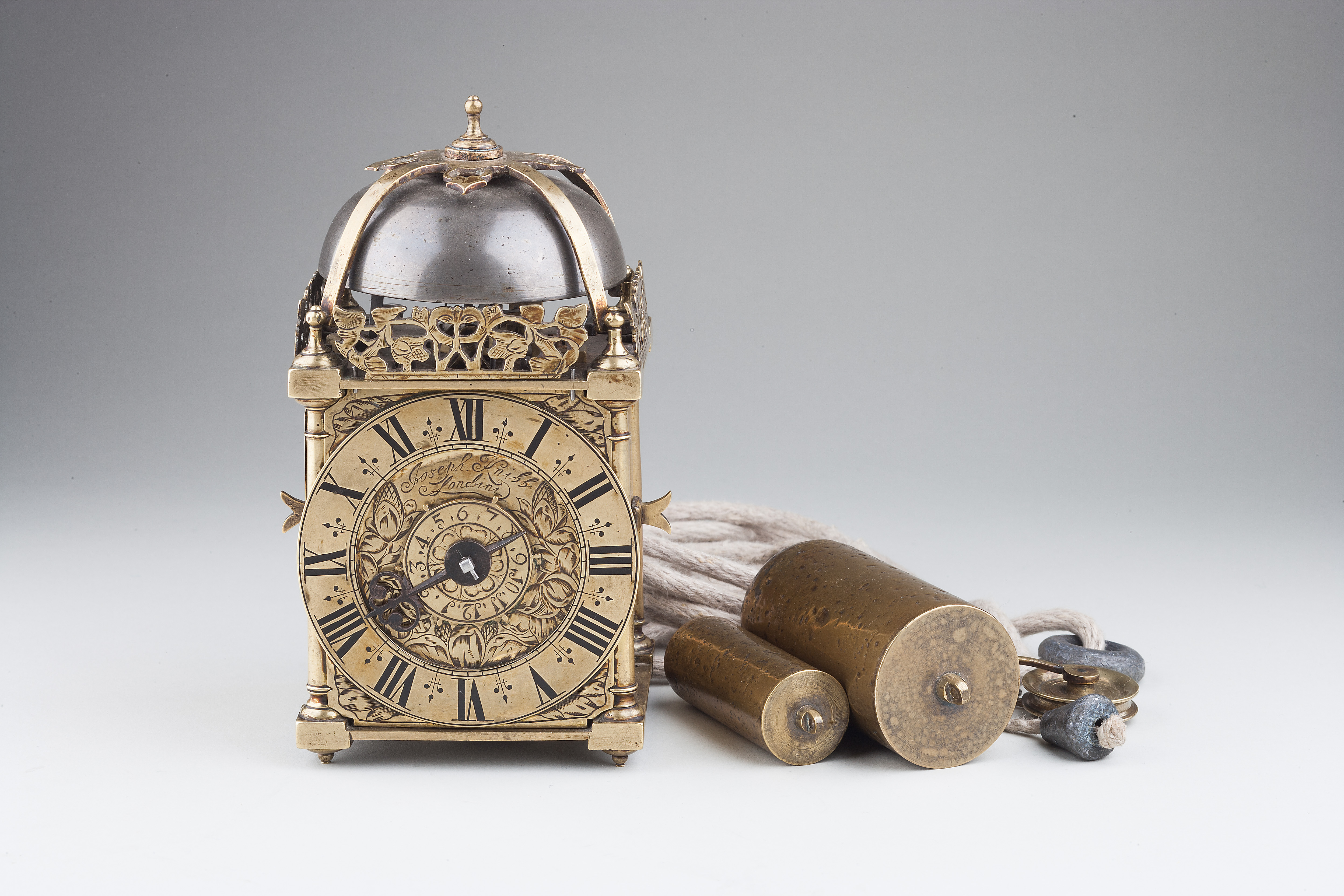
Joseph Knibb, London

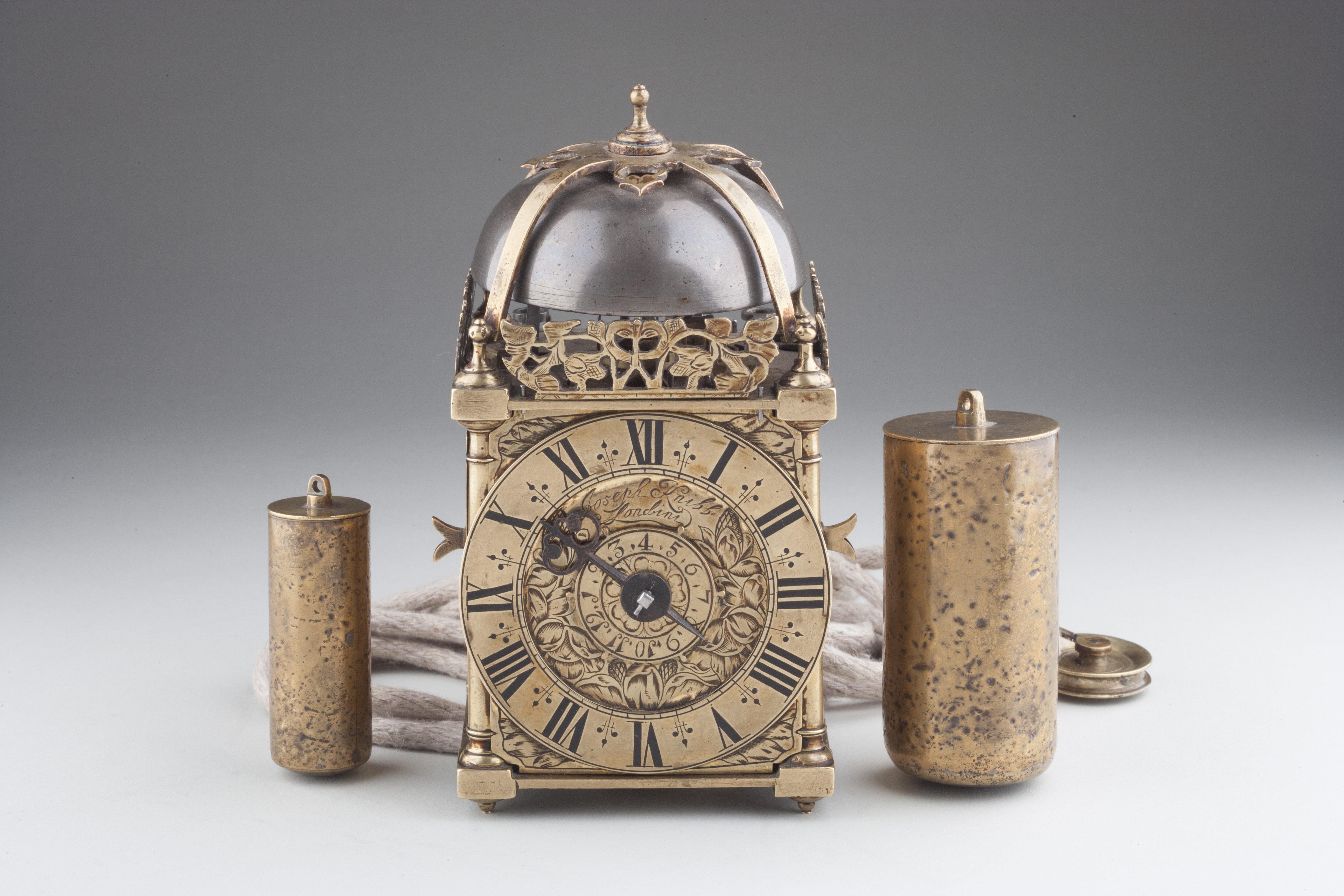
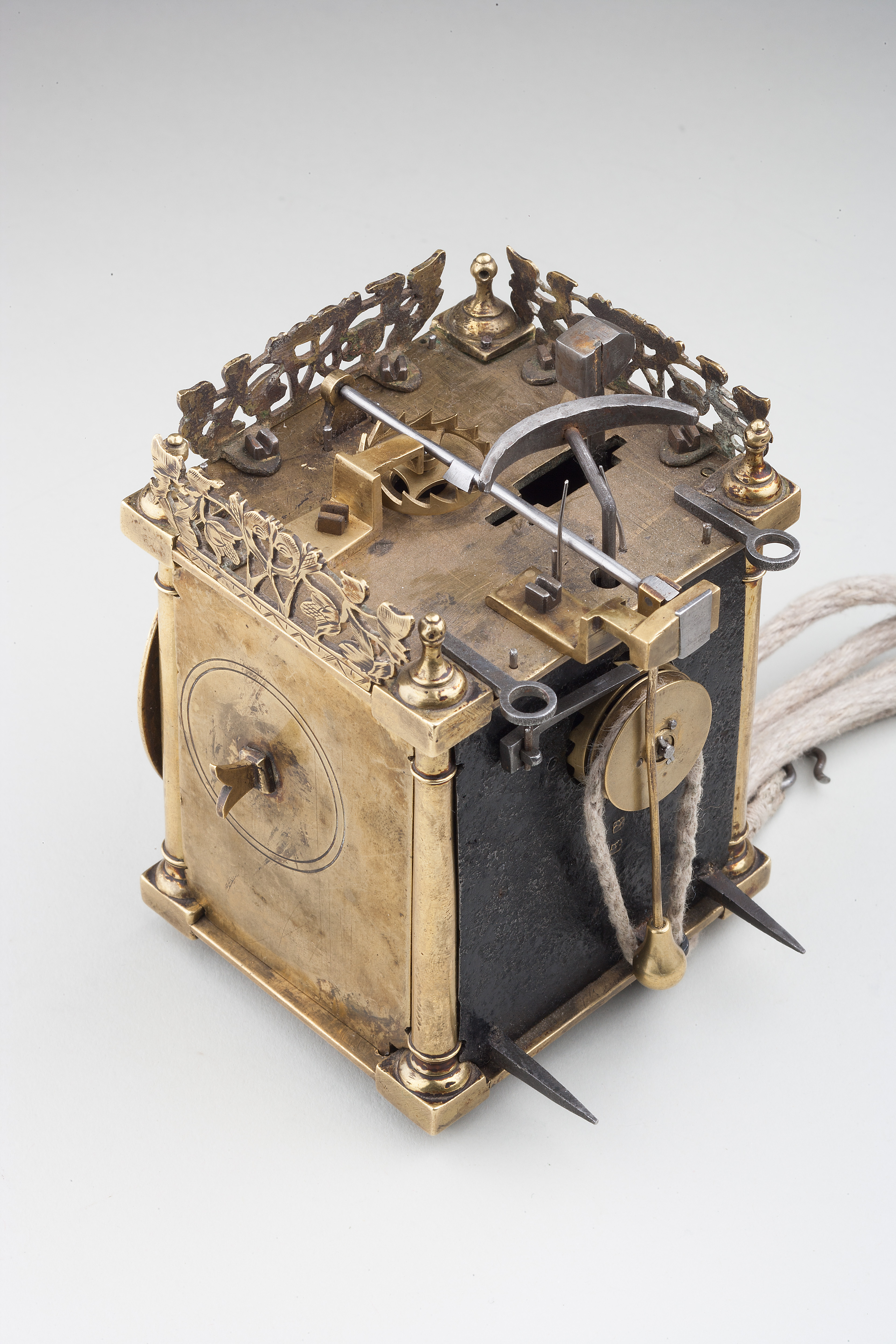
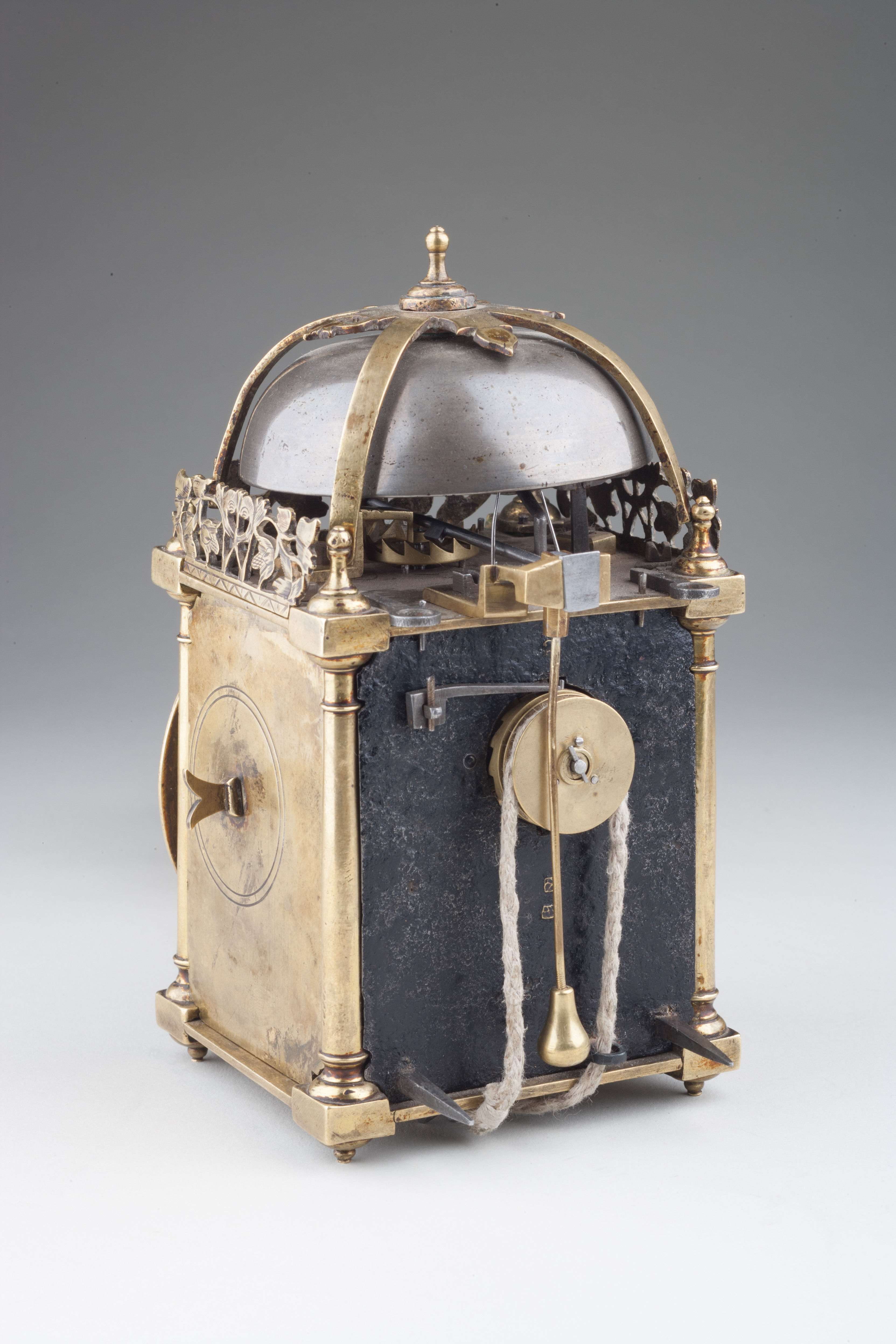
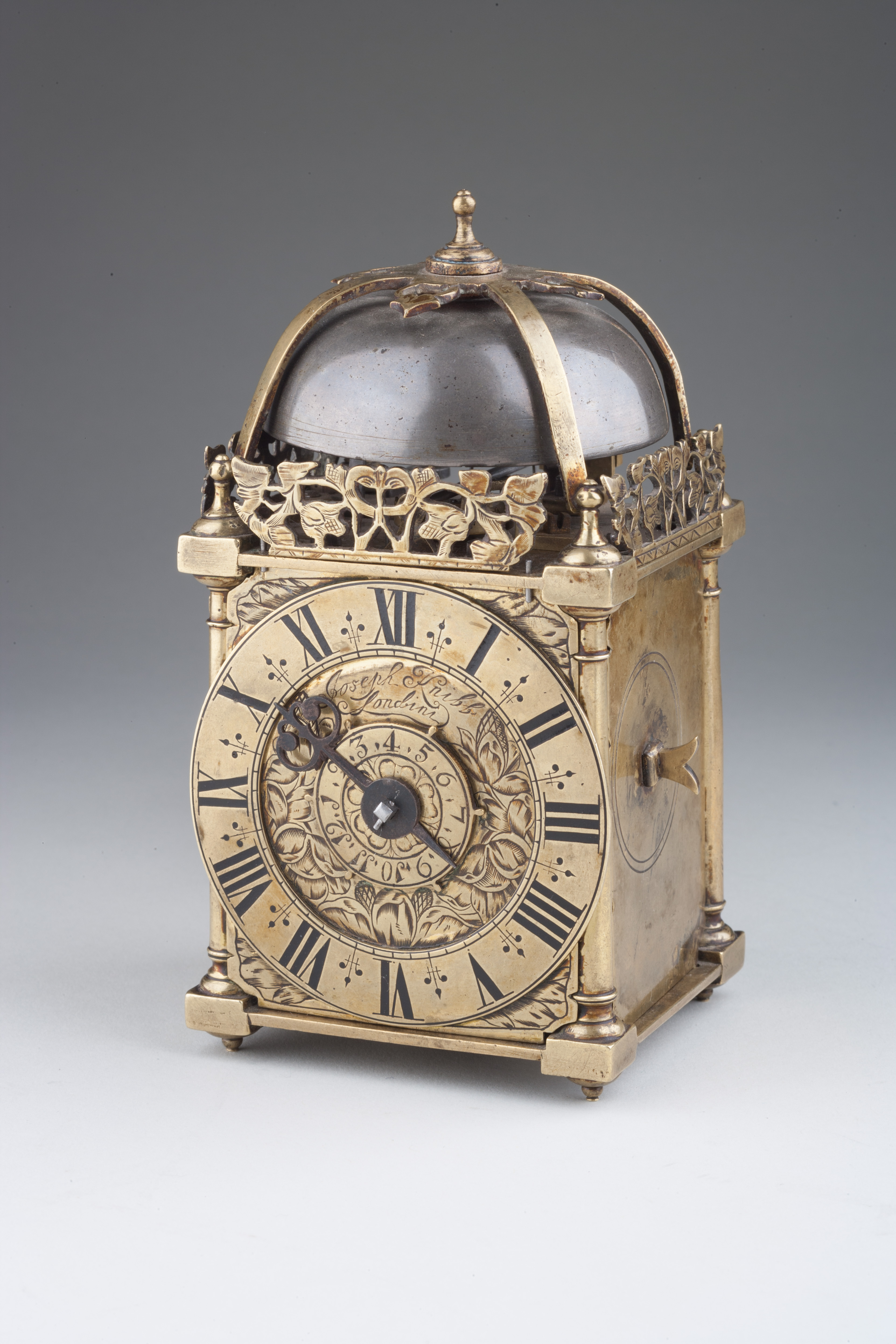
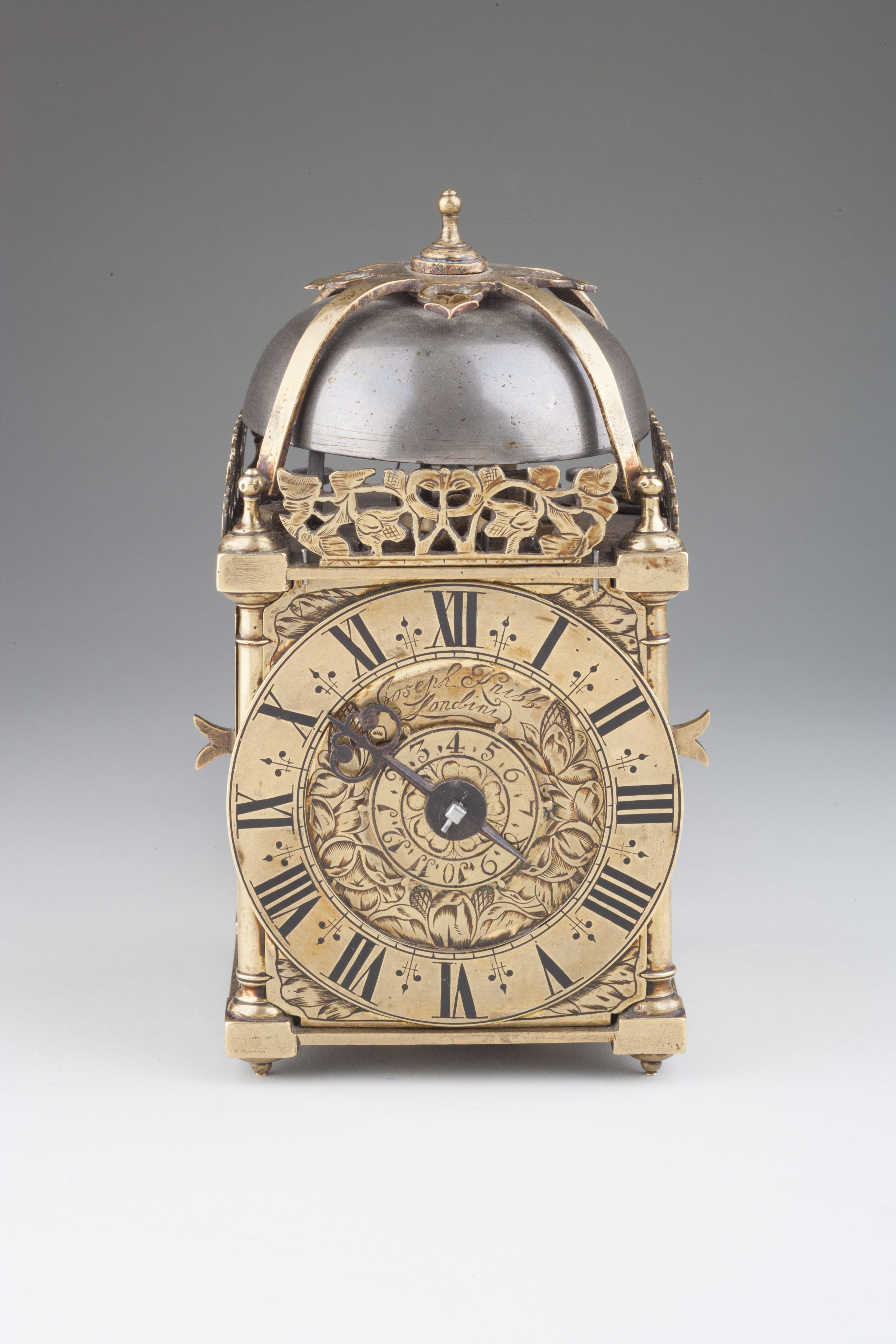
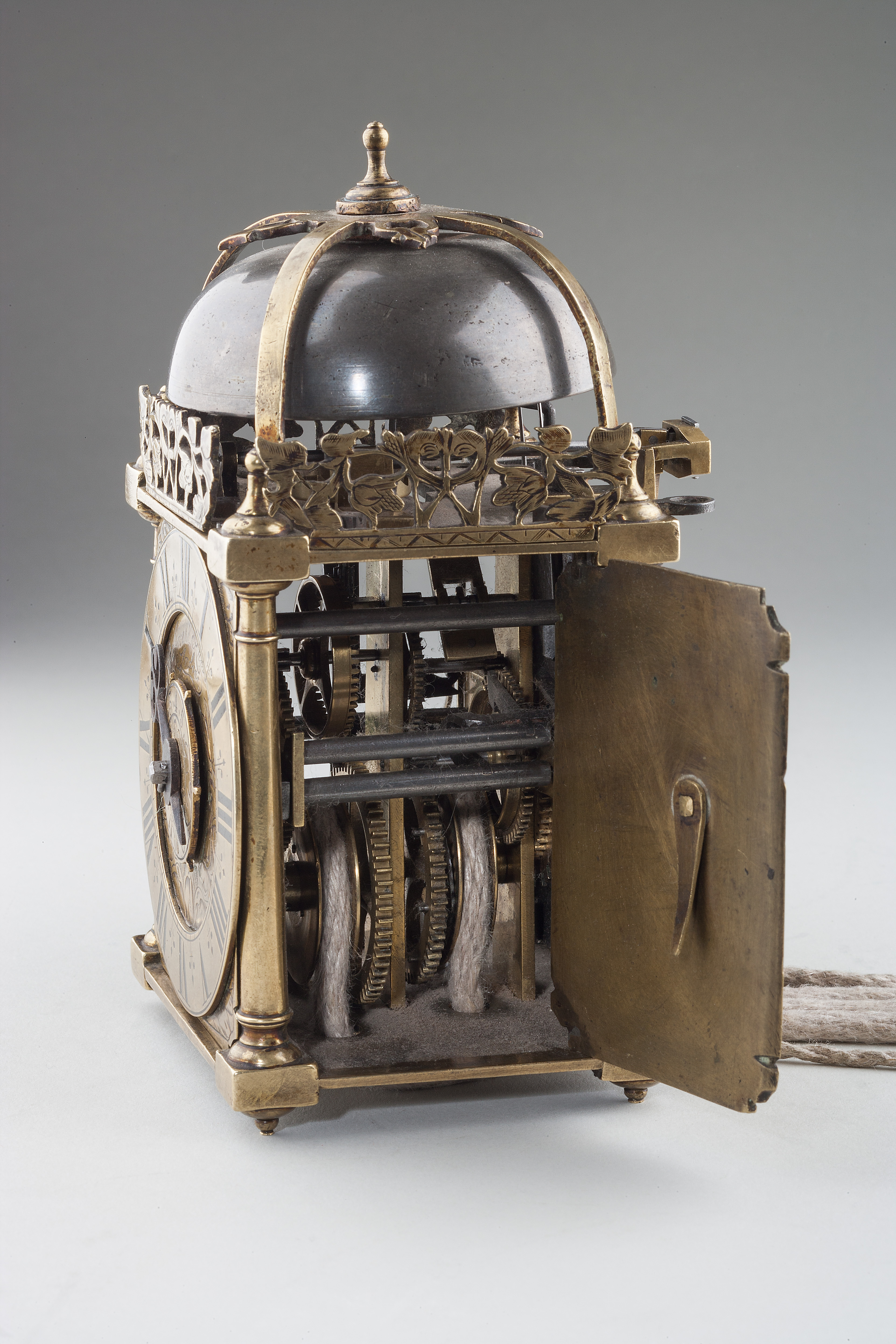
Circa 1680
Sold
6¾ inches high
A very pretty miniature striking lantern clock with alarm. CASE The beautifully proportioned case is of typical high quality with four columns to each angle, each with slight entesis and each columns is surmounted by a small concave ‘spire’ finial pinned to which are four brass bell straps enclosing the original bell and surmounted by a further finial. The gallery frets are pierced and engraved with flowers and foliage and the sides have detachable brass doors with turn-screw handles and pretty roundel-engraved decoration. Two iron hooks fixed at the back of the top plate will suspend the clock from a wall. DIAL The dial is signed Joseph Knibb Londini beneath chapter XII of the narrow brass chapter ring which has Roman numerals and trident half hour markers, well-pierced blued steel single hour hand, the dial centre is set with a brass alarm disc surrounded by typical tulip and foliate engraving MOVEMENT The movement has a knife edge verge escapement with three wheel train, the crown wheel is set on the top plate with the potance and backcock; the strike is regulated by a brass countwheel at the back of the strike train with the hours being struck by an iron hammer on the bell above. The alarm pulley and crown wheel are mounted on the iron backplate with the double-headed clapper striking on the bell above. JOSEPH KNIBB Born in 1640, Joseph Knibb was apprenticed to his cousin Samuel circa 1655. At the end of his apprenticeship in 1662 he moved to Oxford, whilst Samuel moved to London. Trading in Oxford proved difficult for Joseph and it was not until 1668, upon payment of a fine, that he was allowed to do so unhindered. In 1670 Samuel died and Joseph moved to London, presumably to take over his workshop. Joseph became a Free Brother in the Clockmakers' Company that year. His first premises were at the Dial in Fleet Street and in 1693 he moved to the Clock Dial near Charing Cross. He became a Steward in the Company in 1684 and Assistant in 1689. The number of clocks still extant suggest that his must have been one of the busiest workshops in London. He sold the business in 1697 and retired to Hanslop in Buckinghamshire, continuing to make some clocks but on a much smaller scale. He died in 1711 NOTES Perhaps only as few as 10-12 miniature lantern clocks by Joseph Knibb exist today, his earliest example is from his formative days in Oxford and is illustrated in The Knibb Family Clockmakers plate 173. The majority of Knibb’s miniature lantern clocks are simple timepieces with alarm, making this striking example a little rarer than his standard timepieces.
